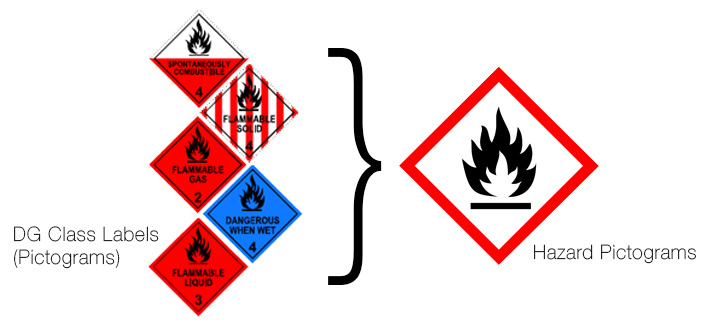The Globally Harmonised System of Classification and Labelling of Chemicals (GHS) is mandatory in Australia since 1 January 2017, with the exception of Victoria and Western Australia.
However, given chemicals brought into these two states will most likely be GHS labelled, knowledge of GHS will be required by persons handling GHS labelled chemicals (as with outbound chemicals to other states and for export).
Remember GHS applies to chemicals with hazards relating to one or more physical, health and environmental hazard classifications.For our detailed article on GHS refer to our
Globally Harmonised System of Classification and Labelling of Chemicals article .
What changes will affect your workplace?
- There will be new labels on industrial chemical containers;
- All Safety Data Sheets (SDS) will have changed (or should have changed) to reflect the new GHS Signal Words, Hazard and Precautionary Statements and Hazard Pictograms.
Ag and Vet chemical labels will remain largely unchanged at this stage. Also the coloured diamonds as prescribed by the Australian Dangerous Goods (ADG) code are retained for both transport requirements and for the placarding of storage areas and manifest information, aiding emergency services in the event of a fire or spill.
Strategy for 2017
- Only purchase industrial chemical products that are GHS compliant (liase with your reseller concerning AgVet chemical products);
- Use up all non GHS stock before ordering in new products, or where long lead times apply for deliveries in remote areas, keep newly purchased GHS compliant stock on shelving behind existing older stock ( i.e. rotate stock);
- Update your Hazardous Chemical register with all new GHS compliant purchases given a tick for compliance and older stock given a cross to denote non-compliance for your records;
- For all hazardous chemicals, ensure that you have the latest GHS compliant SDS which will probably mean they will be written late 2016 or reflect the changes as described above;
- Review the new GHS compliant SDS’s to ensure appropriate risk management processes are in place;
- Ensure all workers have awareness training in GHS and how this alters the information contained in the new SDS’s.




